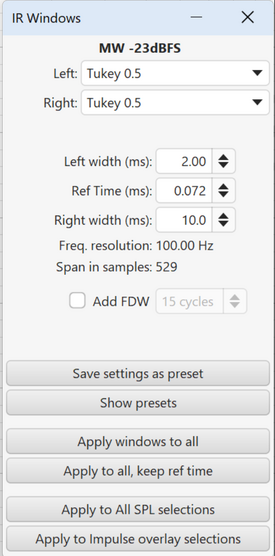OK so I'm going to take measurements with the microphone and the speaker in the chain. But I wonder why I am getting different results with the Stepped Sine and Log Sweep:


Both taken with microphone 31.6cm from the 5.25" mid-woofer, in vented speaker of 7L. The fundamental in green shows the port tuning frequency of around 45Hz. When taking Sweeps and distortion, the log sine sweep is smoothed at 1/24th octave, I got that from the manual.
On the other hand, the stepped sine is not smoothed. So is the stepped sine more authentic?
After all, the stepped sine seems to reject noise better and can resolve harmonics below the noise floor.
But then the log sweep looks smoother from 2KHz upwards My gate is 9ms, but I thought this only affects the SPL & Phase view... . Is this the result of graphical antialiasing? Or something else?
Both taken with microphone 31.6cm from the 5.25" mid-woofer, in vented speaker of 7L. The fundamental in green shows the port tuning frequency of around 45Hz. When taking Sweeps and distortion, the log sine sweep is smoothed at 1/24th octave, I got that from the manual.
On the other hand, the stepped sine is not smoothed. So is the stepped sine more authentic?
After all, the stepped sine seems to reject noise better and can resolve harmonics below the noise floor.
But then the log sweep looks smoother from 2KHz upwards My gate is 9ms, but I thought this only affects the SPL & Phase view... . Is this the result of graphical antialiasing? Or something else?
Last edited:















